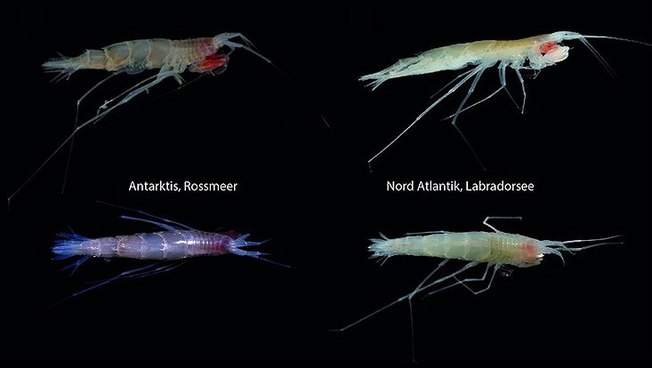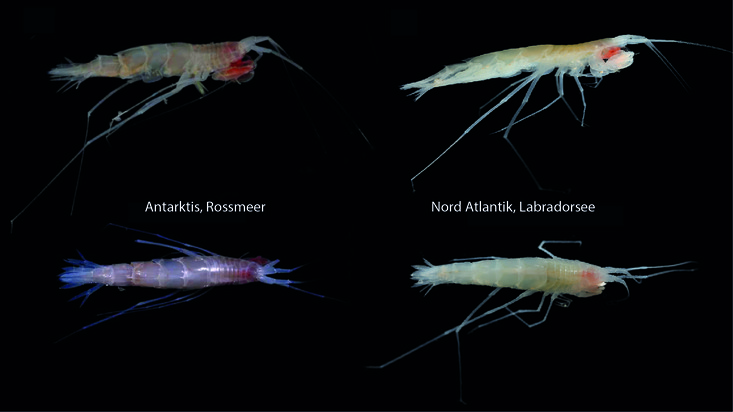9 October 2023
Deep-sea researchTeam Discovers Global Distribution of Predatory Crustacean

Photo: David Bowden (National Institute of Water and Atmospheric Research) and Nicole Gatzemeier (German Centre for Marine Biodiversity Research)
The abyssal zone, the deep seafloor below 3,000 meters, is the largest and least explored habitat on Earth. It is particularly challenging for researchers to collect invertebrates from these depths.
Amphipoda are among the key players at the bottom of the deep sea, where they are found in large numbers and a variety of species. Females engage in brood care and carry their eggs and young in a brood pouch. Unlike many other marine invertebrates, they do not have free-swimming larvae that can spread out over long distances in the ocean.
Researchers from the Department of Biology at Universität Hamburg, the Natural History Museum Vienna, and the University of Lodz have all found the amphipod aRhachotropis abyssalis at depths of several kilometers in the Ross Sea, the Pacific Ocean, and the North Atlantic Ocean. “What is particularly remarkable is that these regions are up to 20,000 kilometers apart,” explains Dr. Anne-Nina Lörz, a researcher at the Institute of Marine Ecosystem and Fisheries Science in the Department of Biology and at the Center for Earth System Research and Sustainability (CEN) at Universität Hamburg. “The animals from the 3 regions were extremely similar in their external appearance—that is, morphologically—as well as genetically.”
For the deep sea, this is the first record of an invertebrate predator without larval distribution that is so extensively distributed geographically, which has also been confirmed by genetic studies. “The species has been found at 3 very distant ends of the world. We assume that it exists in the areas in between but has simply been overlooked there,” says Dr. Martin Schwentner of the Natural History Museum Vienna and coauthor of the study. Rhachotropis abyssalis was first collected from the Ross Sea in the Antarctic and described by Dr. Anne-Nina Lörz in 2010. The new evidence was made possible in part by expeditions on the Sonne research vessel to the Kuril-Kamchatka Trench and the Labrador Sea.
“Perhaps this extensive distribution represents a rare exception for breeding predators; perhaps these findings are not an exception at all but rather reflect the rare sampling and rare taxonomic examination of invertebrates in the deep sea,” says Lörz. “Our results highlight the sparse knowledge of biodiversity and biogeography on abyssal plains.”
About the Sonne, Meteor, and Maria S. Merian research vessels
Universität Hamburg operates 3 German research vessels that are in service around the world. The Sonne and the Meteor are owned by the Federal Republic of Germany, represented by the Federal Ministry of Education and Research. The Maria S. Merian is owned by the state of Mecklenburg-Western Pomerania, represented by the Ministry of Science, Culture, Federal and European Affairs. The German Research Fleet Coordination Centre, located at the University, is responsible for the operations of the vessels as well as for the scientific-technical, logistical, and financial organization of all expeditions.
Original publication:
Anne-Nina Lörz, Martin Schwentner, Simon Bober, Anna Jażdżewska (2023) Multi-ocean distribution of a brooding predator in the abyssal benthos, Scientific Reports 13, 15867 (2023). https://doi.org/10.1038/s41598-023-42942-0

